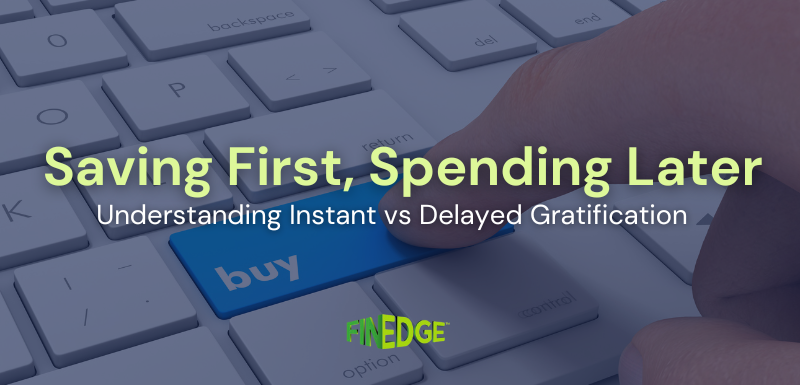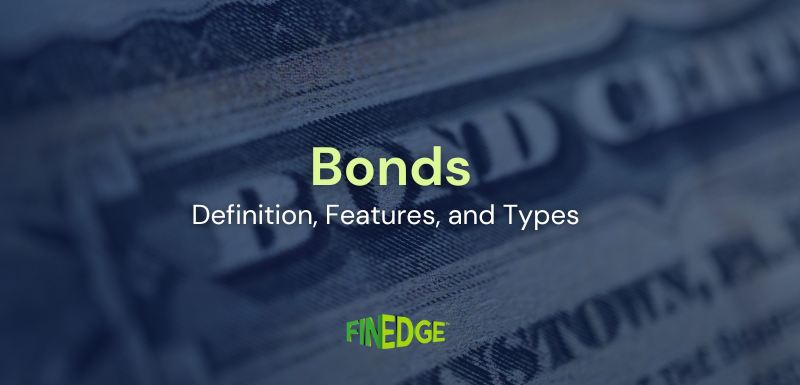Importance Of Taking Informed Risk When Investing

Investors often align financial product choices with their risk profiles, such as favoring equities for aggressive strategies and debt for conservative ones. However, prioritizing investment time horizon over risk profile can lead to more informed decisions, ensuring suitability for both short-term and long-term goals.
Should You Choose Financial Products As Per Your Risk Profile?
Most investors choose financial products based on their risk profile. For example, an aggressive investor may choose to allocate a higher amount to equity, and a conservative investor may choose to allocate a higher amount to debt.
However, what if an aggressive investor invests in an equity fund for a short-term goal and there is a sudden big market fall? Similarly, if a young investor with a conservative risk profile allocates all or most of their money to fixed-income products for a long-term goal like retirement, will it be the best thing to do? For an investor, it will be better to choose financial products based on the investment time horizon rather than their risk profile. Let us discuss why and how an investor should do that.
Classification Of Financial Goals
Based on the investment time horizon, financial goals can be classified into the following three categories.
Short-Term Goals
Goals where the time horizon for achieving them is less than three years can be classified as short-term goals. Some examples of short-term goals include:
- Building and maintaining an emergency fund with six months of expenses.
- Buying term life insurance for the family bread earners.
- Buying comprehensive health insurance for the entire family.
- Annual domestic family vacation.
- Buying a two-wheeler, etc.
Medium-Term Goals
Goals where the time horizon for achieving them is between three to seven years can be classified as medium-term goals. Some examples of medium-term goals include:
- Building a fund for the down payment for the purchase of a property
- Repaying a home loan earlier than scheduled
- Buying a car
- Building a fund for starting a business
- International family vacation, etc.
Long-Term Goals
Goals where the time horizon for achieving them is more than seven years can be classified as long-term goals. Some examples of long-term goals include:
- Building a fund for a child’s higher education
- Building a fund for a child’s marriage
- Building a retirement fund for self and spouse
- Repaying a home loan earlier than scheduled, etc.
Investing Based on Investment Time Horizon
Most people choose financial products for investment based on their risk profile. However, the investment time horizon plays an important role. Let us understand with a couple of examples.
Ajay is 25 years old and has just started earning. He has an aggressive risk profile. In January, he started a one-year SIP in an equity fund for a domestic vacation planned in December. There is a big fall in the stock market in October, and it stays at lower levels till December. As a result, Ajay is not able to accumulate the required money for the vacation in December.
In such cases, even if an investor has an aggressive risk profile, they should invest as per the investment time horizon rather than individual risk profile.
Let us look at another scenario. Karan is 25 years old and has just started earning. He has a conservative risk profile. Karan invests Rs. 10,000 monthly (Rs. 1.2 lakhs per annum) in a debt fund for retirement. If the fund gives a return of 8% CAGR, in 35 years (by the time Karan turns 60 years old), he will accumulate Rs. 2.23 crores in his retirement fund.
However, if Karan invests in an equity fund that has the potential to give a 12% CAGR return in 35 years, he will accumulate Rs. 5.80 crores in his retirement fund. This amount is more than double of what he would get from the debt fund.
There is another way of looking at it. Let us assume that Karan wants to accumulate a retirement corpus of Rs. 2.23 crores, as seen in the earlier section. Now, Karan will have to invest only Rs. 3,849 per month (Rs. 46,192 per annum) in an equity fund with an expected 12% CAGR return instead of the earlier Rs. 10,000 per month (Rs. 1,20,000) in a debt fund with an expected 8% CAGR return.
Over the long-term investment horizon of 35 years, the investment risk reduces. Hence, Karan should consider investing in an equity fund for his retirement, even though he has a conservative risk profile. Similarly, you should invest for your goals based on the investment time horizon rather than your risk profile.
Which Funds Should You Invest in Based on Your Investment Time Horizon?
So, now we understand why an individual should invest based on the investment time horizon. Now, let us look at which investment products an individual should invest in based on the investment time horizon.
The Investment Time Horizon Is Less Than Three Years
For short-term goals where the investment time horizon is less than three years, you should invest in debt funds or other fixed-income products. The other fixed-income products include bank fixed deposits, Government small savings schemes, bonds, etc. You should consider factors like expected rate of return, risk involved, lock-in period, tax benefits, liquidity, etc.
You should not consider investing in equity mutual funds for goals where the investment time horizon is less than three years.
The Investment Time Horizon Is 3-5 Years
For medium-term goals, where the investment time horizon is 3-5 years, you should consider investing in balanced funds and index funds (based on large-cap indices like Nifty 50, Nifty Next 50, or Nifty 100 indices). Balanced funds provide you exposure to a mix of equities and fixed income. Equity provides growth when markets are doing well, and fixed income provides stability to the overall portfolio when the markets are going down.
Index funds can provide you with returns that mirror market returns with a diversified portfolio at a low cost. As of 31st January 2024, the returns of large-cap indices in the last five years have been as follows.
| Index | Total Return (CAGR) |
|---|---|
| Nifty 50 | 16.30% |
| Nifty Next 50 | 16.85% |
| Nifty 100 | 16.24% |
The above table shows the major large-cap indices have given returns in the 16-17% CAGR in the last five years, which are good returns.
The Investment Time Horizon Is 5-7 Years
For medium-term goals, where the investment time horizon is 5-7 years, you should consider investing in a mix of flexi-cap, large-cap, and mid-cap funds. A flex-cap fund has the flexibility to invest across large, mid, and small-cap stocks depending on where the fund manager finds opportunities.
Mid-cap funds invest in companies that have the potential to grow at a faster rate than large-cap companies. Hence, these funds have the potential to give better returns than large-cap funds. On the other hand, large-cap funds are relatively more stable compared to mid-cap funds. Hence, the two categories can provide a combination of growth and stability to your overall portfolio.
As of 31st January 2024, the Nifty Midcap 150 Index has given a total return of 25.30% CAGR in the last five years. These are better than the Nifty 50 Index's total return of 16.30% CAGR during the same period.
The Investment Time Horizon Is More Than 7 Years
For long-term goals, where the investment time horizon is more than seven years, you should consider investing in a mix of flexi-cap, mid-cap, and small-cap funds. In the long run, mid and small-cap funds have the potential to outperform large-caps due to their high growth.
As of 31st January 2024, the returns of mid and small-cap indices in the last five years have been as follows.
| Index | Total Return (CAGR) |
|---|---|
| Nifty Midcap 150 | 25.30% |
| Nifty Smallcap 250 | 25.76% |
The above table shows the mid-cap and small-cap indices have given returns in the 25-26% CAGR in the last five years, which are excellent returns.
Table Source: Index Factsheet
The Difference in Returns Based on the Investment Time Horizon
We have discussed why an individual should invest based on investment time horizon rather than individual risk profile. Let us take an example to understand what can be the difference in returns in the long run.
The above section mentions the returns from large, mid, and small-cap funds in the last five years. Currently, markets are near or at all-time highs. Hence, these returns may not be sustained in future. Let us assume lower returns and see the difference in returns in the long run.
We assume the following returns: Fixed income (7%), large-caps (10%), mid-caps (12%), and small-caps (14%). Let us see what will be corpus accumulated on a Rs. 10,000 monthly (Rs. 1,20,000 annual) investment over a period of 5, 10, 15, and 20 years.
| Investment Time Horizon | Annual Investment | Fixed Income (7%) | Large-Cap Funds (10%) | Mid-Cap Funds (12%) | Small-Cap Funds (14%) |
|---|---|---|---|---|---|
| 5 Years | Rs. 1,20,000 | Rs. 7,38,395 | Rs. 8,05,873l | Rs. 8,53,823 | Rs. 9,04,262 |
| 10 Years | Rs. 1,20,000 | Rs. 17,74,032 | Rs. 21,03,740 | Rs. 23,58,550 | Rs. 26,45,342 |
| 15 Years | Rs. 1,20,000 | Rs. 32,26,566 | Rs. 41,93,967ll | Rs. 50,10,394 | Rs. 59,97,642 |
| 20 Years | Rs. 1,20,000 | Rs. 52,63,821 | Rs. 75,60,300 | Rs. 96,83,848 | Rs. 1,24,52,210 |
The above table shows how, over a longer investment time horizon, the difference in returns (7 to 14%) can make a big difference in the amount you will accumulate. Also, in the long run, when you invest regularly through an SIP, the purchase price gets averaged, and the risk reduces.
Longer investment time horizon = Relatively lower risk = Better returns = Goal achievement
In the long run, you benefit from the power of compounding. Hence, for long-term financial goals like a child's higher education and marriage, and own retirement fund, you should invest in equity funds. Similarly, for short and medium-term goals, you should choose financial products based on investment time horizon. Thus, choosing financial products based on investment time horizon rather than individual risk profile can be the key to achieving your financial goals.
Your Investing Experts
Relevant Articles
Types of Gold Investments: A Complete Guide for Indian Investors
Gold continues to be one of India’s most trusted assets, but the way we invest in it has evolved. With multiple formats now available each serving a different purpose it’s important to know where gold truly fits into your financial plan. This guide simplifies your options so you can choose the format that aligns with your goals, behaviour, and long-term strategy.
Instant vs Delayed Gratification: A Behavioural Lens on Long-Term Wealth Creation
Wealth creation is not driven only by market movements or income levels, it is equally shaped by everyday behavioural choices. The balance between instant and delayed gratification often determines whether an investor accumulates meaningful wealth or repeatedly falls short of long-term goals.
What Are Bonds in India?
From government to corporate and tax-free bonds, understand what bonds really mean and how they function within India’s financial ecosystem.

.png)

